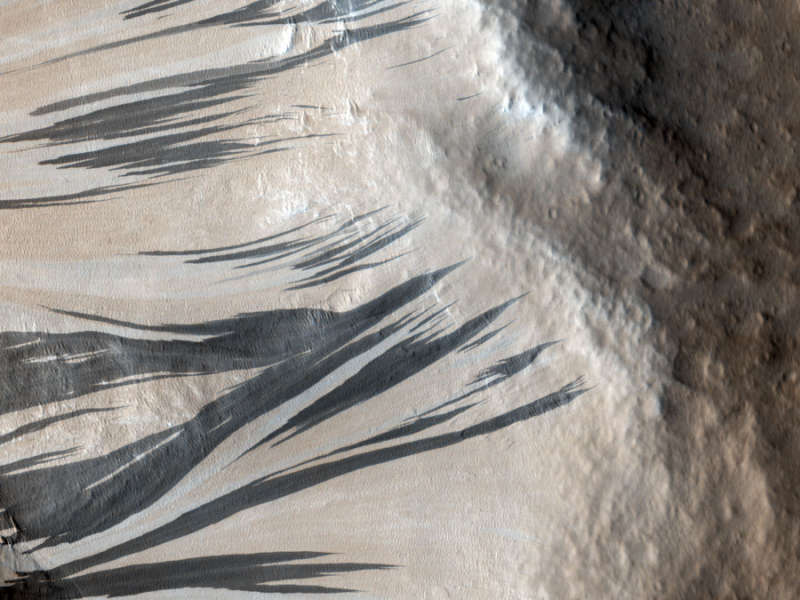Explanation: What creates these picturesque dark streaks on Mars? No one knows for sure. A leading hypothesis is that streaks like these are caused by fine grained sand sliding down the banks of troughs and craters. Pictured above, dark sand appears to have flowed hundreds of meters down the slopes of Acheron Fossae. The sand appears to flow like a liquid around boulders, and, for some reason, lightens significantly over time. This sand flow process is one of several which can rapidly change the surface of Mars, with other processes including dust devils, dust storms, and the freezing and melting of areas of ice. The above image was taken by the HiRise camera on board the Mars Reconnaissance Orbiter which has been orbiting Mars since 2006. Acheron Fossae is a 700 kilometer long trough in the Diacria quadrangle of Mars.
1999 2000 2001 2002 2003 2004 2005 2006 2007 2008 2009 2010 2011 2012 2013 2014 2015 2016 2017 2018 2019 2020 2021 2022 2023 2024 2025 |
Yanvar' Fevral' Mart Aprel' Mai Iyun' Iyul' Avgust Sentyabr' Oktyabr' Noyabr' Dekabr' |
NASA Web Site Statements, Warnings, and Disclaimers
NASA Official: Jay Norris. Specific rights apply.
A service of: LHEA at NASA / GSFC
& Michigan Tech. U.
|
Publikacii s klyuchevymi slovami:
Mars - sand
Publikacii so slovami: Mars - sand | |
Sm. takzhe:
Vse publikacii na tu zhe temu >> | |
